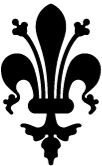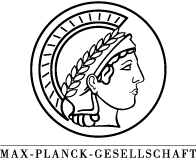LINEA II - Tangents, interlaces, knots, labyrinths. Structure and meaning of lines from antiquity to the contemporary period
International Conference
organized by Marzia Faietti and Gerhard Wolf
The conference is the second meeting of the LINEA Project, which is subdivided into three phases. It will discuss fundamental linear structures that correspond to essential elements, iconic or aniconic, of the visual art of various cultures: lines that run parallel to each other, intersect or are interwoven, create labyrinths or indicate the way of escape.
The chosen time frame ranges from antiquity to the present day. Not aiming to cover these epochs in a systematic or chronological way, the conference will be constructed on the basis of case studies that may range from Egyptian papyri to the line of Kandinsky and beyond. The geographical areas to be taken into consideration are primarily the Western cultures in their various declinations of lines from both a diachronic and synchronic perspective. However, the conference will also include a comparative level with papers on Islamic art and the Far East.
The linear structures identified as the subject of LINEA II recur in, and are substantiated by, very diversified types of materials and artistic genres, which in turn presuppose two-dimensional and three-dimensional systems of representation; spatial or virtual projections; monochromic, dichromatic or polychromatic forms. Tangents, interlaces, knots and labyrinths will be analyzed in terms of their aesthetic and symbolic aspects, ranging from drawings to manuscripts; from prints to metalwork; from fabrics to ceramics and stamped leather; from paintings and frescoes to mosaics; from intaglio to sculptures and extending as far as architectural labyrinths and figurative representations in which bodies and objects are constructed from or performed by the calibrated and subtle interplay of lines.
Downloads
Palazzo Grifoni - Seminarraum
Via dei Servi 51
50122 Firenze
Hinweis
Diese Veranstaltung wird durch Fotografien und/oder Videoaufnahmen dokumentiert. Falls es nicht Ihre Zustimmung findet, dass das Kunsthistorische Institut in Florenz Aufnahmen, auf denen Sie erkennbar abgebildet sein könnten, für die Veranstaltungsdokumentation und Öffentlichkeitsarbeit (z.B. Social Media) verwendet, bitten wir um eine entsprechende Rückmeldung.


